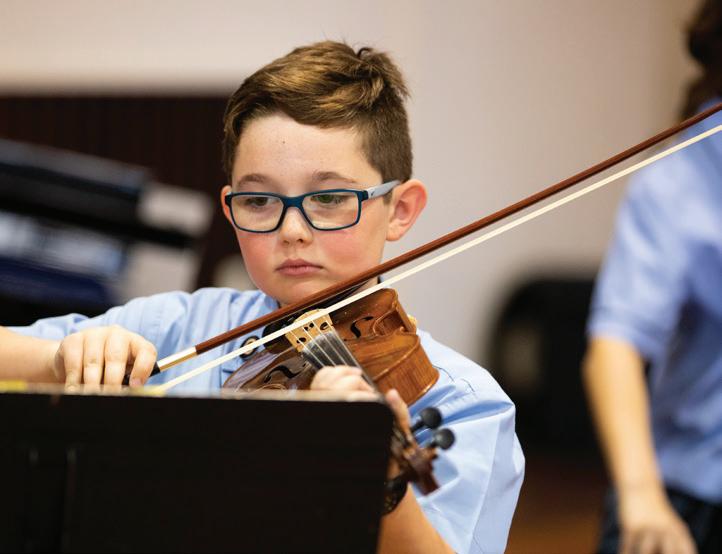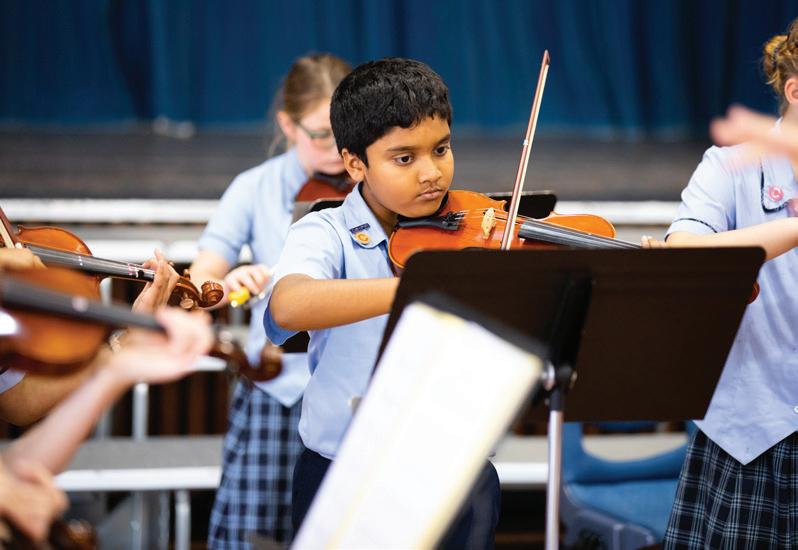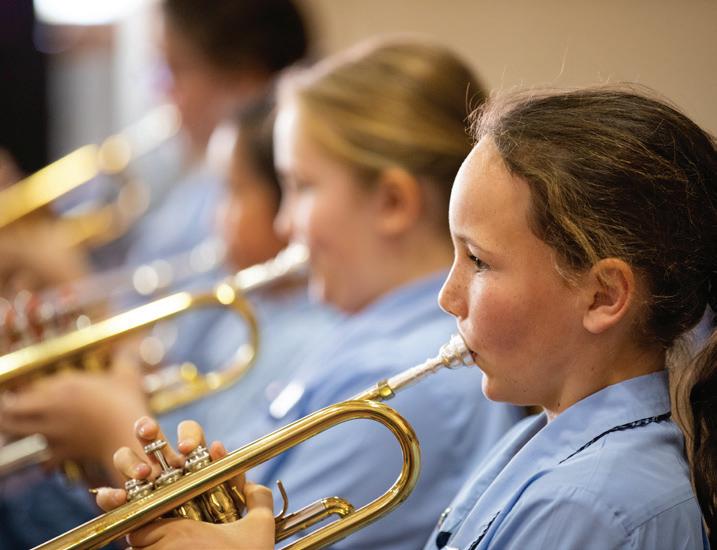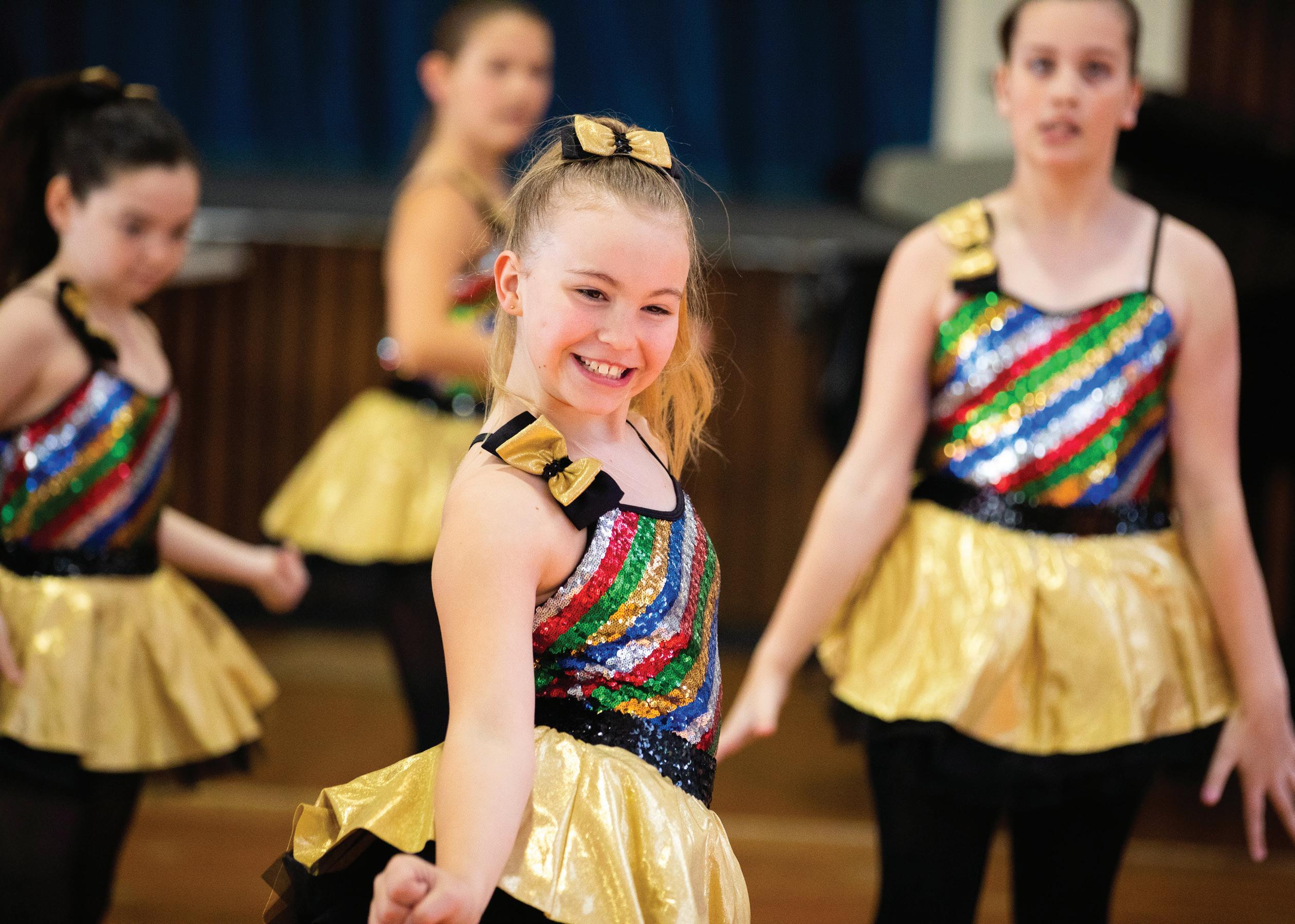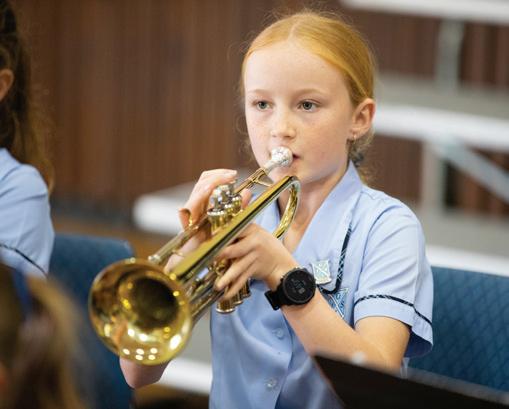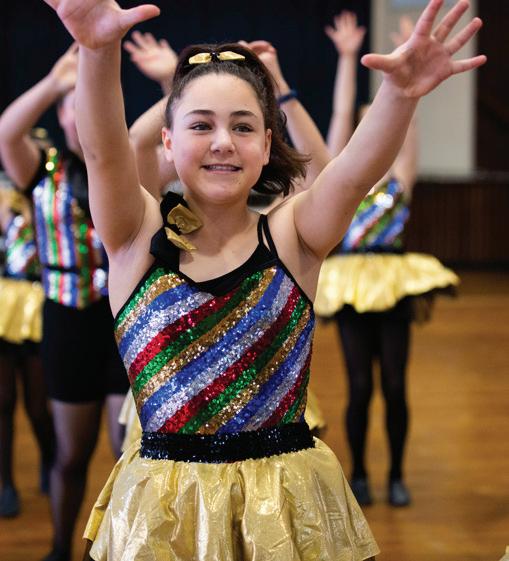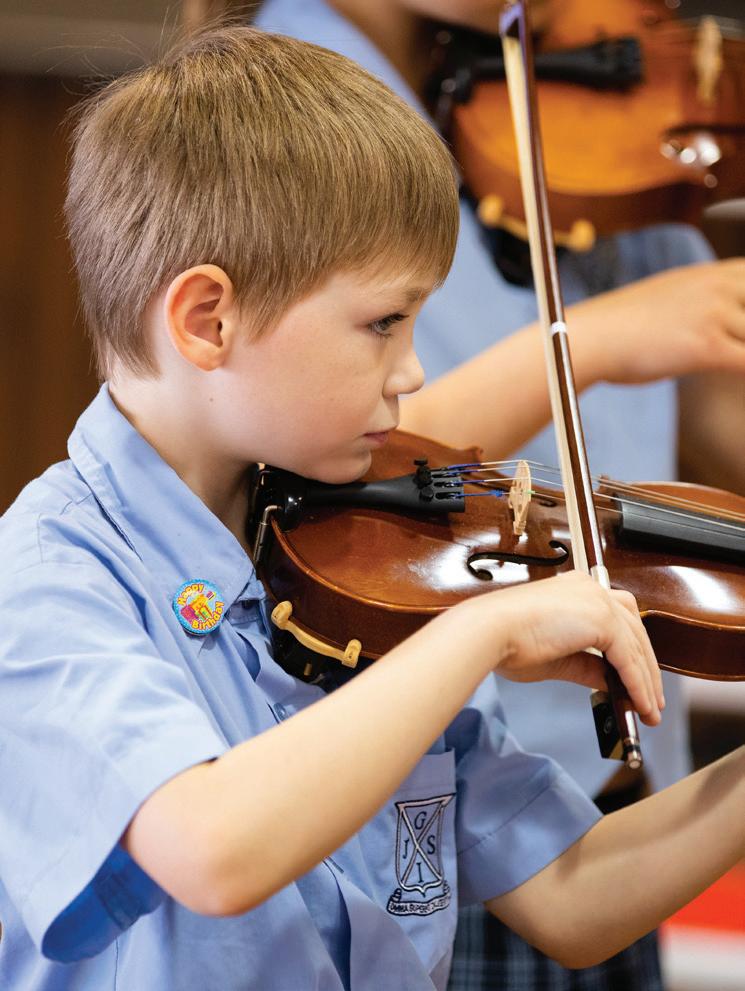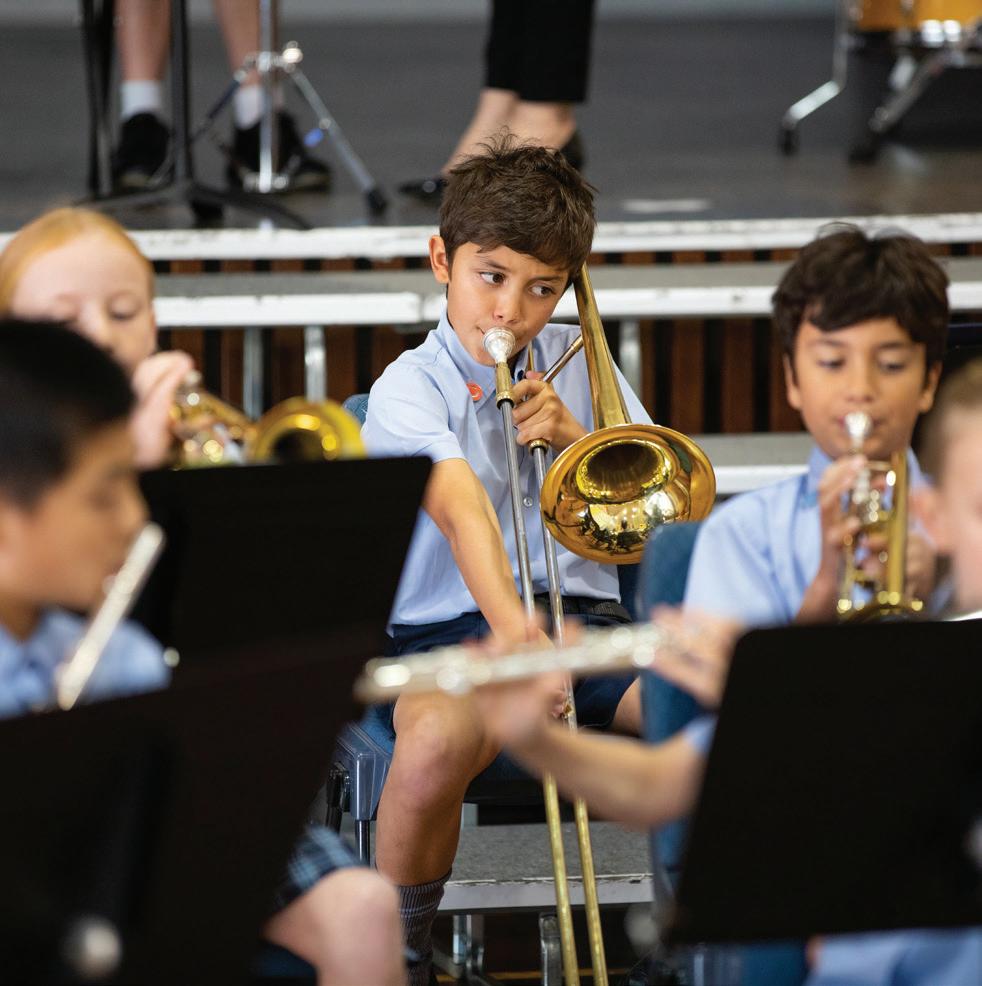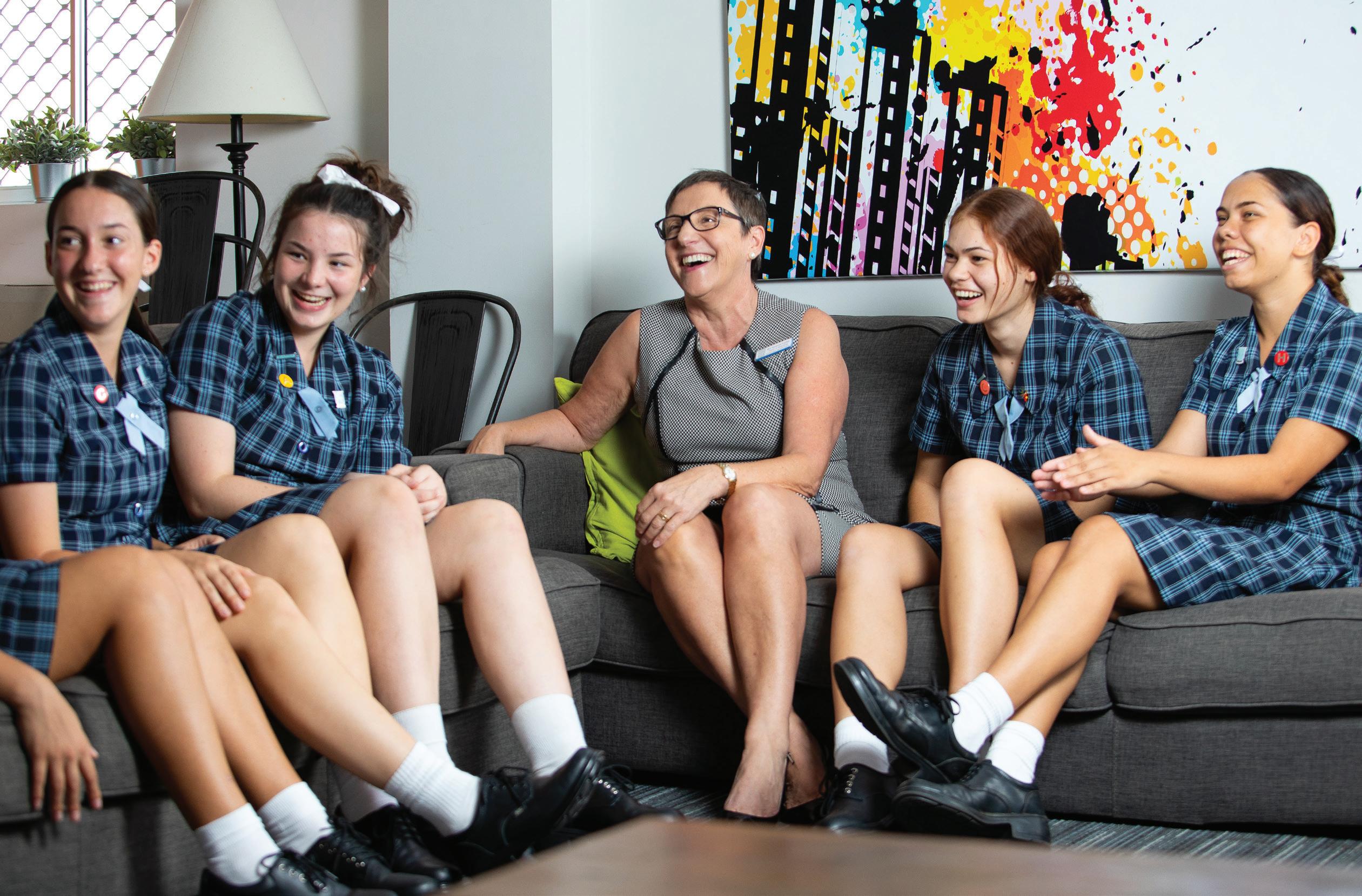
4 minute read
REMOTE LEARNING
In Terms 1 and 2, Junior Grammar adapted to Remote Learning utilising the pedagogy of Blended Learning.
Blended Learning is a “range of learning opportunities, e.g. online, face-to-face, community and home to achieve curriculum diversity and promote student enthusiasm.” (Department of Education and Early Childhood, 2012). This pedagogical approach continued the usual routines familiar to students, including teacher directed learning, classroom routines, use of textbooks and online learning platforms, which new forms of technology could overlap to create student managed learning. During this period of rapid change, usual learning routines were maintained to provide students with normalcy and a sense of comfort.
Advertisement
The online digital portfolio, SeeSaw, allowed teachers to assign the class and individual students with daily learning tasks and record videos and audio to provide students with a familiar face and voice. Teachers viewed, corrected, and provided feedback to students and monitored students’ strengths and areas for growth to plan for future differentiated instruction. Students could use SeeSaw to communicate with their teacher to ask for assistance.
During Remote Learning, teachers also utilised learning activities that promoted motivation, wellbeing, engagement in learning, and connections with family. During learning time, students were encouraged to exercise or play board games with family members, contact their grandparents to research and take brain breaks to remain ‘charged’ for learning. Throughout this period, Junior Grammar’s commitment to Personalised Learning remained. Teachers utilised online learning platforms to deliver lessons aligned to students’ goals. The online platforms, Reading Eggs/Express, Wuskha, and teacher prepared lessons helped students’ progress in their literacy goals. Whilst Mathseeds, MathsOnline, and teacher prepared lessons helped students develop their mathematical goals. The Intervention and Extension (IE) team, capably led by Mrs Jenny Hurd, continued to provide students with lessons to support them in achieving their IE goals.
Junior Grammar’s commitment to the development of the ‘whole child’ remained during Remote Learning. Students participated in lessons from all Learning Areas, including Technologies, The Arts, Health and Physical Education and Languages.
Lessons from remote learning Whilst we know face-to-face learning is ideal, we acknowledge that there are learning opportunities from Remote Learning for the future. Remote Learning has reminded us of the importance of a range of pedagogies, the role of the teacher within the classroom and importance of schooling in children’s lives.
Junior Grammar has always used technology to enhance learning rather than replace teaching. Research emerging from the pandemic is reinforcing this position. Evidence shows that 15-30 minutes of online learning is the most productive, as online lessons require more concentration than face-to-face classes. Junior Grammar will continue to use SeeSaw, including consolidation of knowledge by completing learning tasks within the platform, differentiation of learning activities and activities to support the development of Personalised Learning Goals. SeeSaw can also be utilised as an online assessment portfolio to store student learning samples throughout the semester.
Remote Learning also reminded us of the importance and positive impacts of the rituals and social aspects of schooling. Regular school and learning routines provide comfort and structure to students’ lives as well as a feeling of safety. Social connections formed at school are an important factor for student’s health and social-emotional happiness. Importance of family in education
As mentioned in the definition of blended learning, community and home were integral to Remote Learning. Parental support was vital during Remote Learning and remains an important aspect of children’s education. Research shows that when schools and families work together, children do better, stay in school longer, are more engaged with their schoolwork, go to school more regularly, behave better, and have better social skills. Parent engagement also results in long term improved economic, social and emotional outcomes for their children (Department of Education, Skills and Employment, 2020). We understand that many parents supported their child/ren’s learning during this period, which placed additional pressures upon family and employment demands. We thank you for your patience, support, and commitment to your child/ ren’s learning. We are thankful that you are part of the Junior Grammar family. —Ms Lezah Semple
Deputy Head of Junior School
References
Department of Education and Early Childhood. (2012). Blended learning: A synthesis of research findings in Victoria Education 2006-2011. Retrieved 22 June, 2012, from https://www.education.vic.gov.au/Documents/ about/research/blendedlearning.pdf Department of Education, Skills and Employment. (2020). Parent Engagement in Children’s Learning. Retrieved June 22, 2020, from https://www.education. gov.au/parent-engagement-children-s-learning
Virtual Soiree
